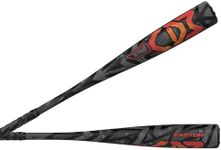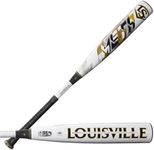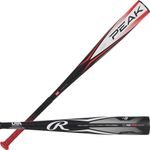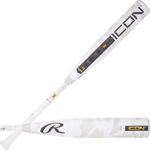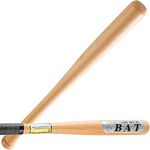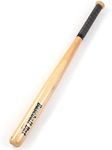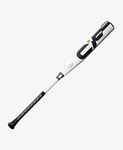Buying Guide for the Best Drop 5 Baseball Bats
Choosing the right drop-5 baseball bat can significantly impact your performance on the field. A drop-5 bat is typically used by players transitioning from youth to high school baseball, as it offers a balance between power and control. When selecting a bat, it's important to consider various specifications to ensure it fits your playing style and physical capabilities. Here are the key specs to focus on and how to navigate them:LengthThe length of a baseball bat is measured in inches and is crucial for determining your reach and swing mechanics. A longer bat provides more plate coverage but can be harder to control, while a shorter bat offers better control but less reach. To find the right length, consider your height and arm length. Generally, players between 5'6" and 5'9" might opt for a bat around 32 inches, while those taller might prefer a 33-inch bat. Test different lengths to see which feels most comfortable and allows for a smooth, controlled swing.
WeightThe weight of a bat, combined with its length, determines its drop weight (length minus weight). A drop-5 bat means the bat's weight is 5 ounces less than its length in inches. Heavier bats can generate more power but may be harder to swing quickly, while lighter bats are easier to control but may not hit as hard. Choose a weight that you can handle comfortably without sacrificing swing speed. If you're transitioning from a lighter bat, gradually increase the weight to build strength and adjust your swing mechanics.
MaterialBaseball bats are typically made from aluminum, composite, or wood. Aluminum bats are durable and provide a good balance of power and control, making them a popular choice for many players. Composite bats offer a larger sweet spot and reduced vibration but can be more expensive and require a break-in period. Wood bats, while traditional, are less forgiving and often used for training purposes. Consider your league's regulations and your personal preference when choosing the material. If you're looking for durability and performance, aluminum or composite bats are excellent options.
Barrel SizeThe barrel size refers to the diameter of the bat's hitting surface. A larger barrel provides a bigger sweet spot, making it easier to make solid contact with the ball. However, larger barrels can also make the bat heavier and harder to control. Smaller barrels offer better control and are lighter but have a smaller sweet spot. If you're a power hitter, you might prefer a larger barrel for maximum impact. Contact hitters, on the other hand, might opt for a smaller barrel to maintain control and bat speed.
GripThe grip of a bat affects how comfortably and securely you can hold it. Grips are usually made from rubber, synthetic materials, or leather, and can vary in thickness and texture. A good grip can reduce vibration and prevent the bat from slipping during your swing. Choose a grip that feels comfortable in your hands and provides adequate cushioning. If you experience a lot of vibration or discomfort, consider adding an overgrip or using batting gloves for extra padding.






